2027 Chevrolet Bolt Vs. 2026 Nissan Leaf: Game On

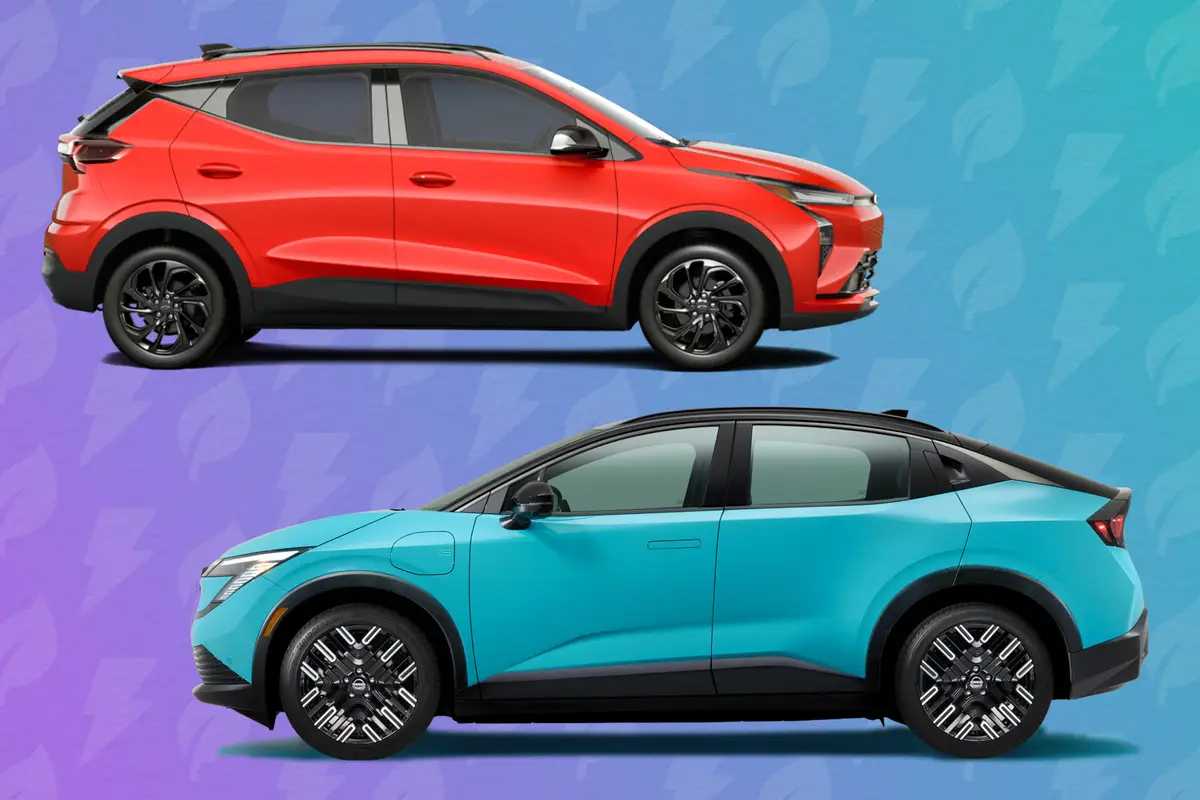
Key Points
- The new 2027 Chevrolet Bolt has been unveiled and will be the cheapest new electric vehicle you can buy when it goes on sale in early 2026 — at least until Nissan reveals the price of its least expensive 2026 Leaf.
- The ‘27 Bolt and ‘26 Leaf stack up very well against each other, with the Bolt coming with better standard horsepower and charging speed but the Leaf besting it in standard range and charging flexibility with its dual charging ports.
Chevrolet has unveiled its refreshed, rethunk but not really restyled 2027 Bolt compact electric crossover after canceling production of its second-generation model back in 2023. The new Bolt, which will be built in Kansas City, Kan., looks very similar to the outgoing model with the exception of refreshed front and rear styling and an updated interior, but it has a completely new electric powertrain that’s derived from GM’s corporate system (formerly known as Ultium) and shared with the Chevrolet Equinox EV.
Although the Bolt’s range has gone up, its price has stayed low — $29,990 for the Launch Edition and $28,995 for the upcoming LT (all prices include $1,395 destination fee). This makes it the cheapest electric vehicle you can buy in the U.S. when it arrives in Chevy showrooms in January 2026.
Related: The Chevrolet Bolt Is Back for 2027; Here’s What We Think It Needs
But wait, there’s another new cheap compact EV arriving in showrooms next year, too, and it also has a long list of loyal fans: The 2026 Nissan Leaf is going to beat the Bolt to U.S. showrooms, commanding a $31,485 sticker price for a mid-level trim to start — but the subsequent base trim is expected to be under $30,000 when it’s eventually unveiled.
So a battle of the cheap compact electric crossovers is upon us! But from what we’ve now seen of the specs, which one of them comes out on top? Here’s how they stack up on paper, at least.
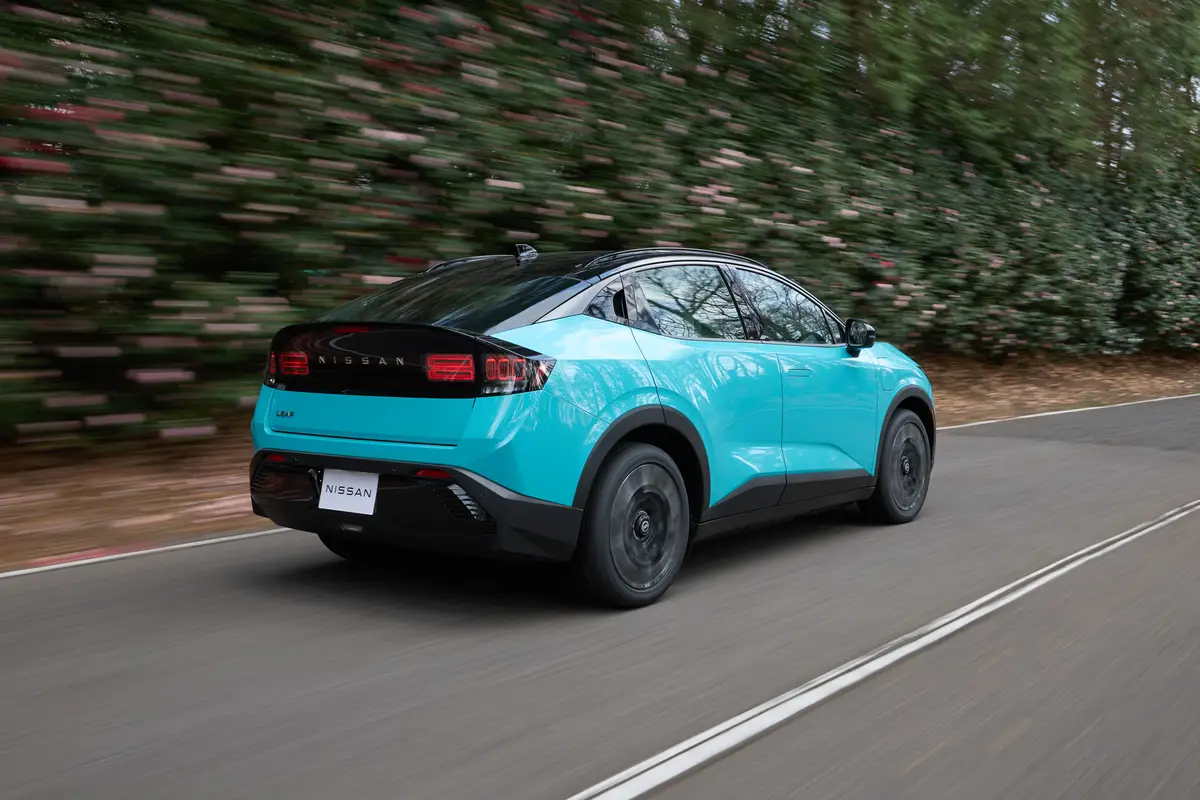
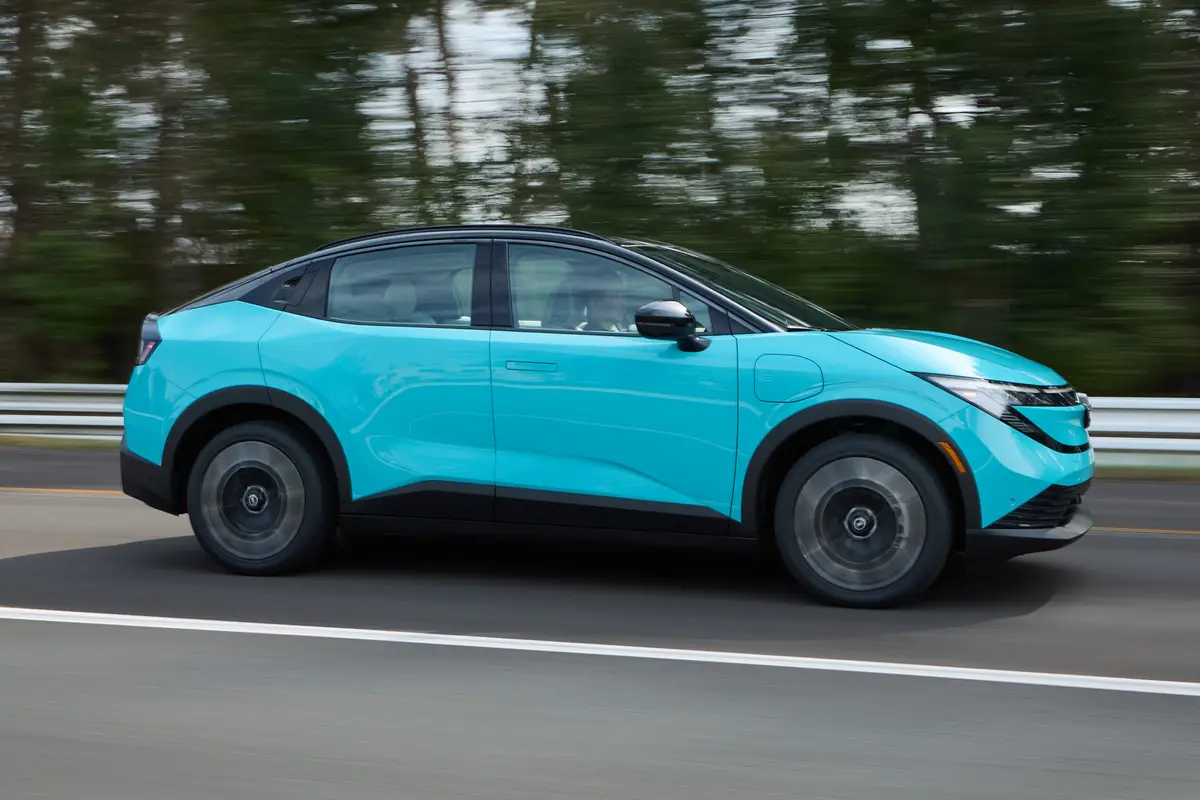
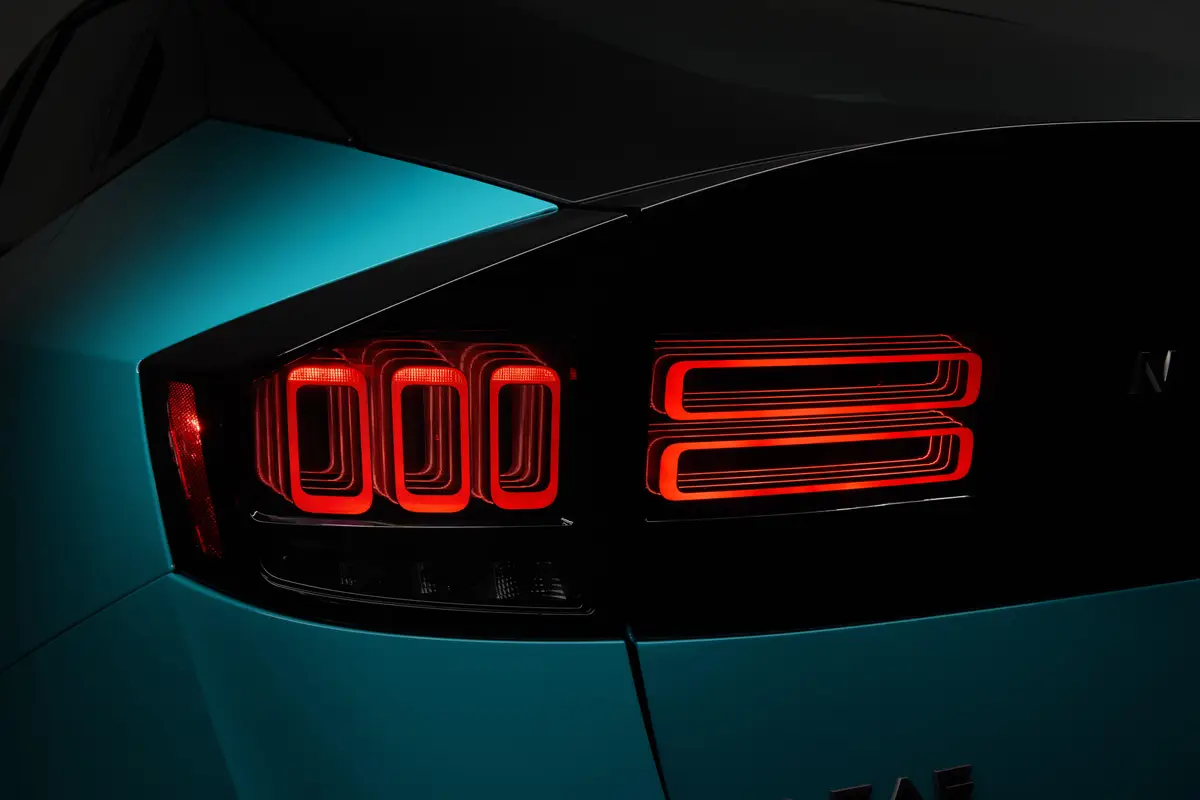
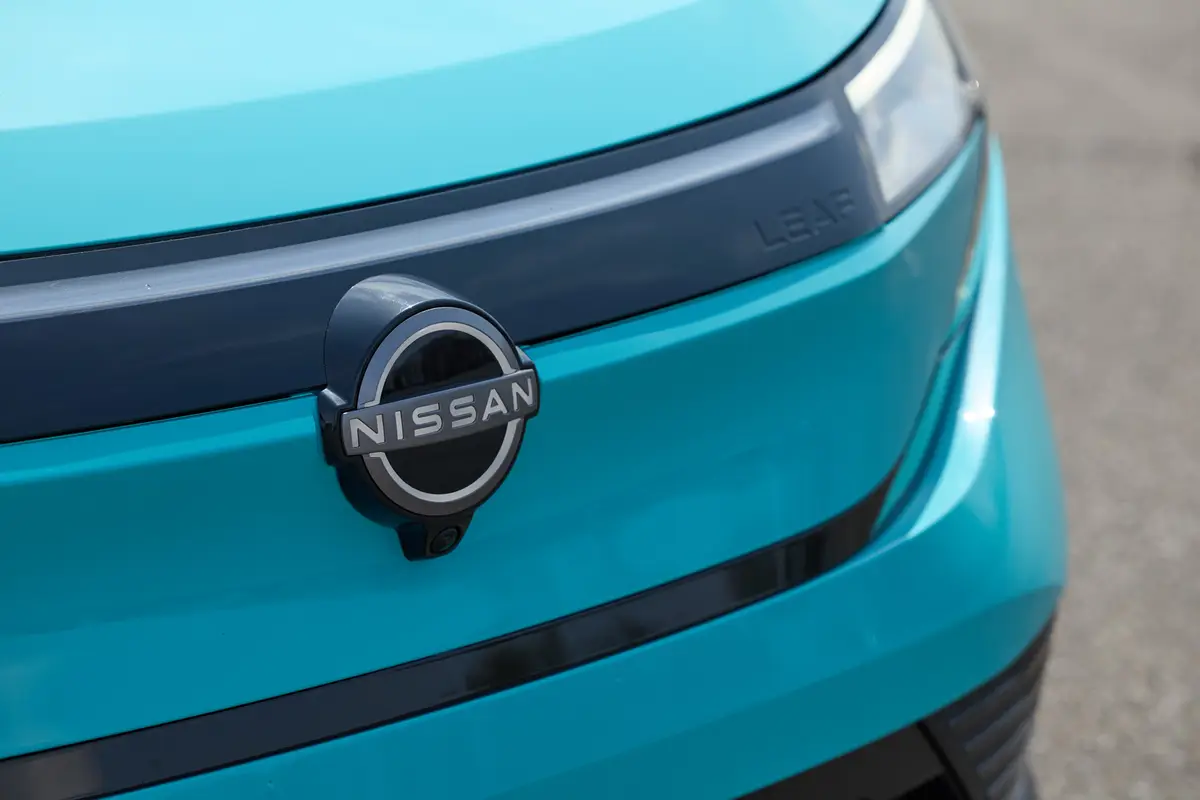
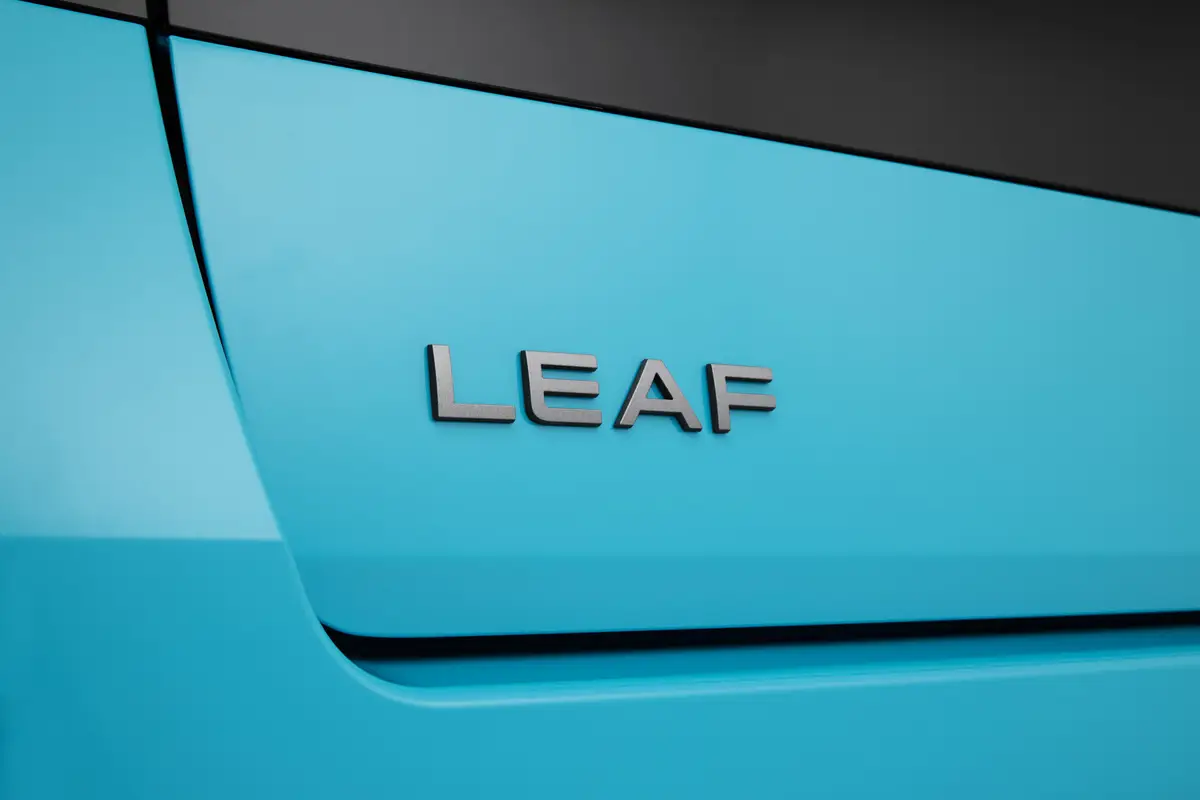
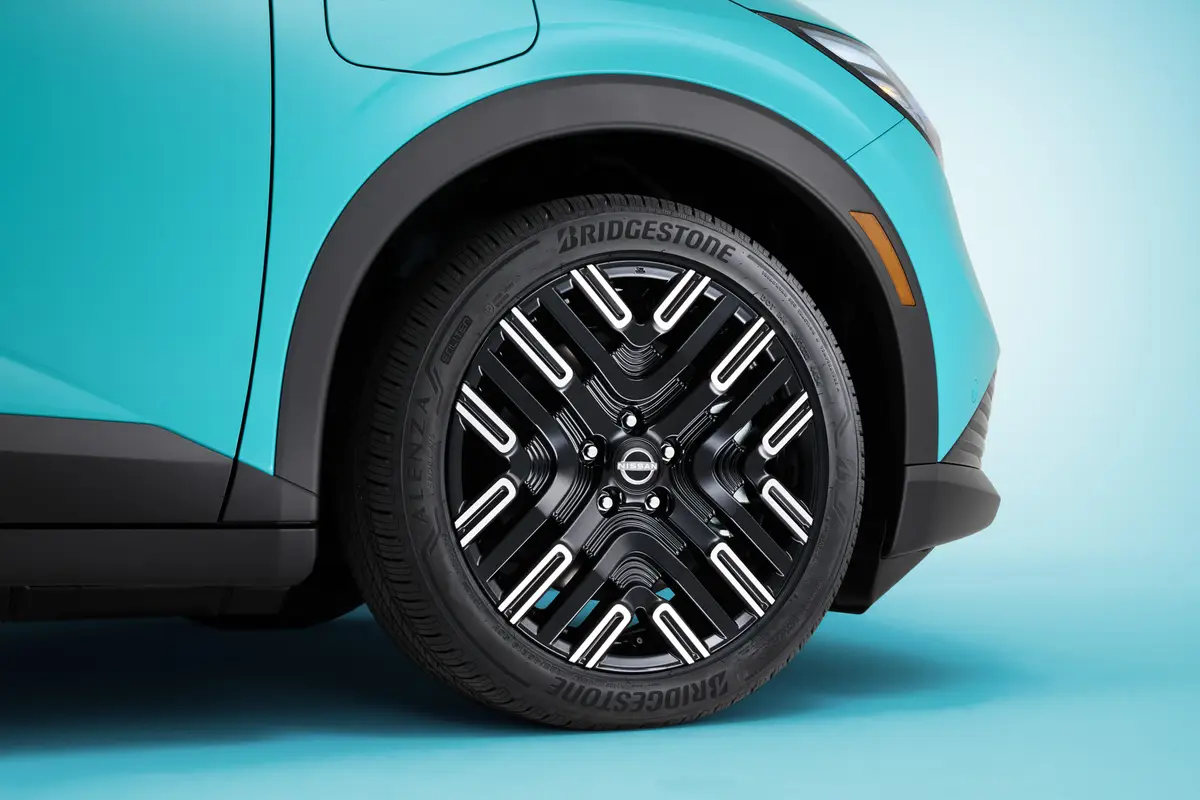
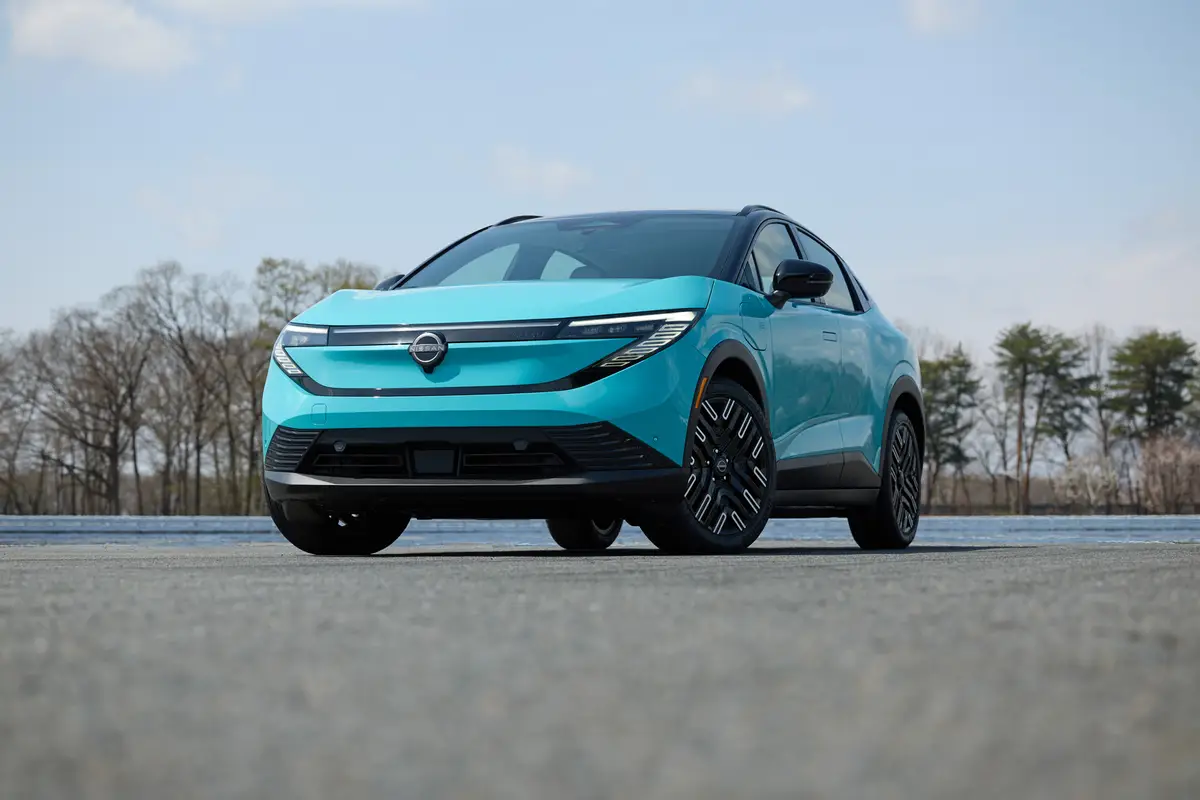
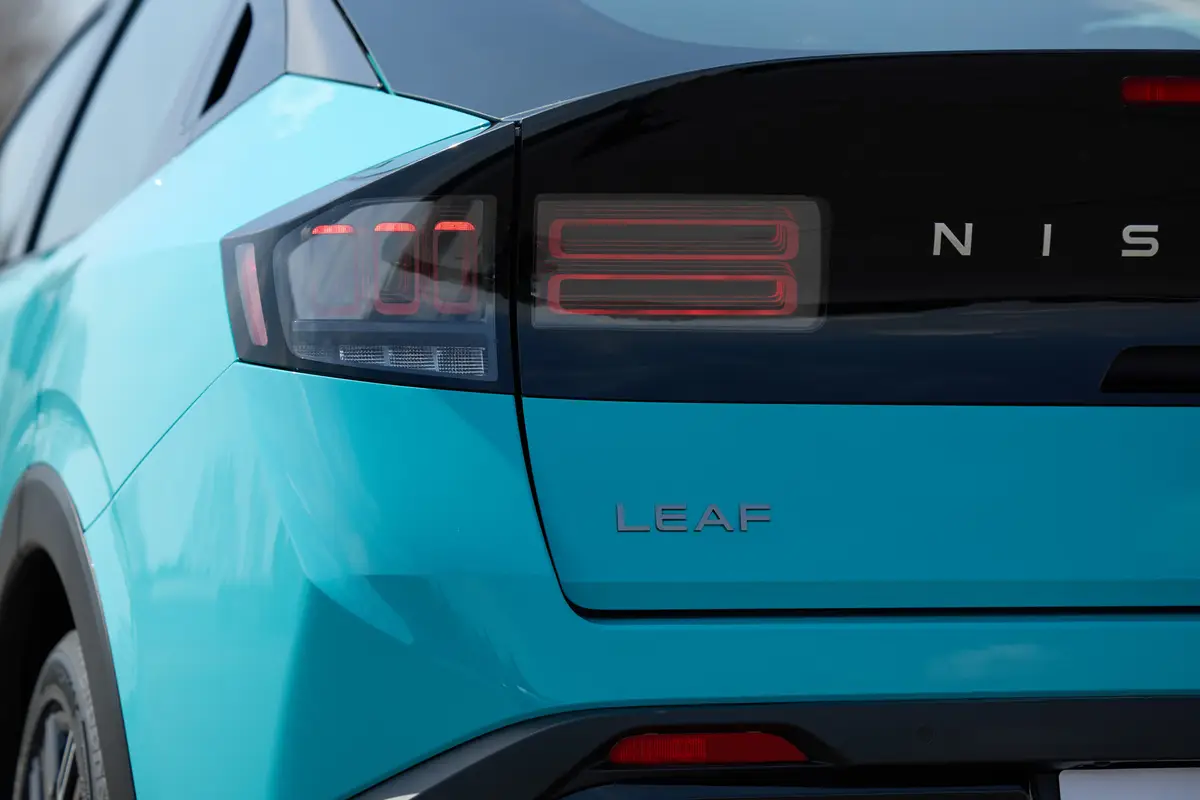
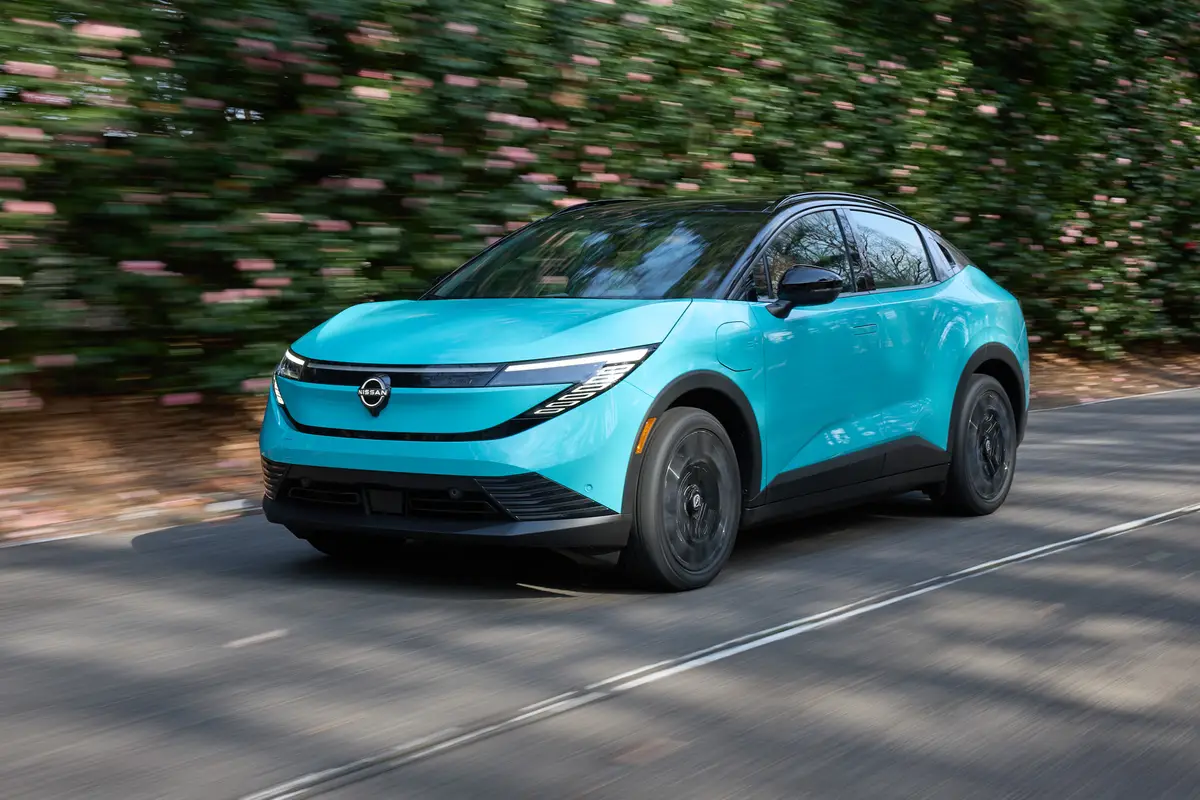
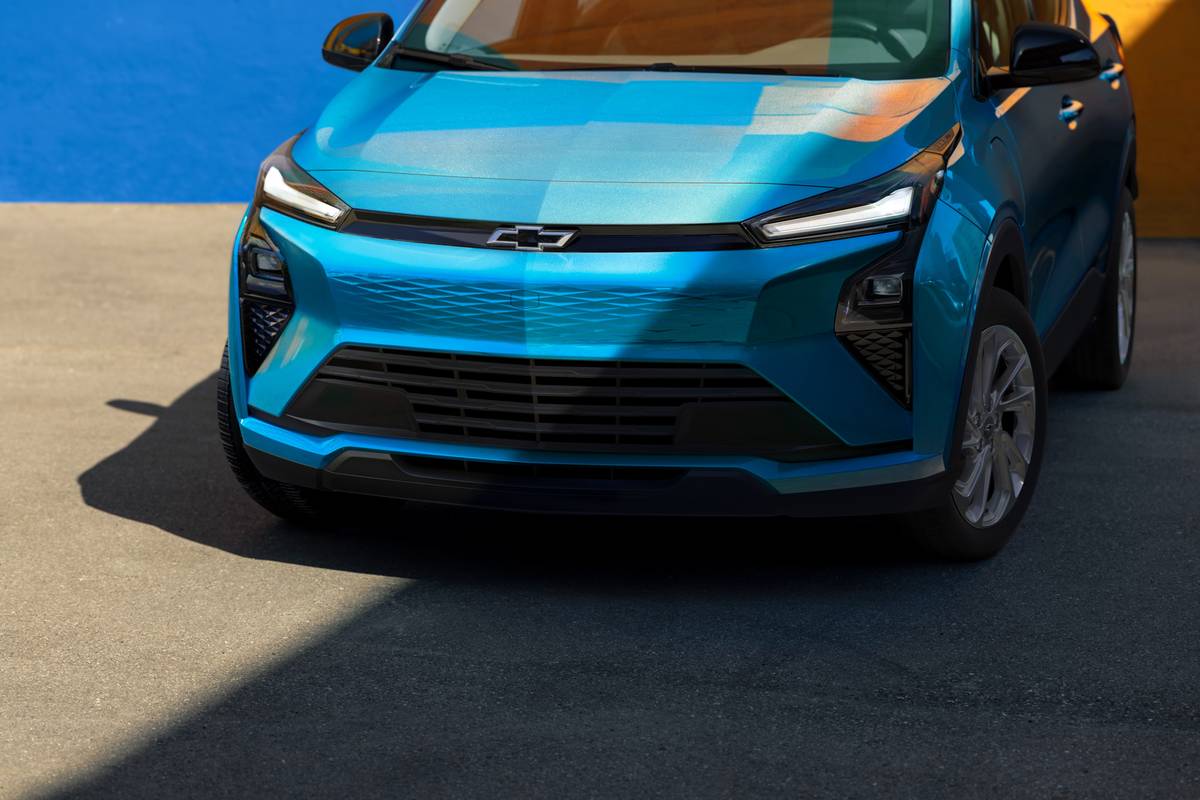
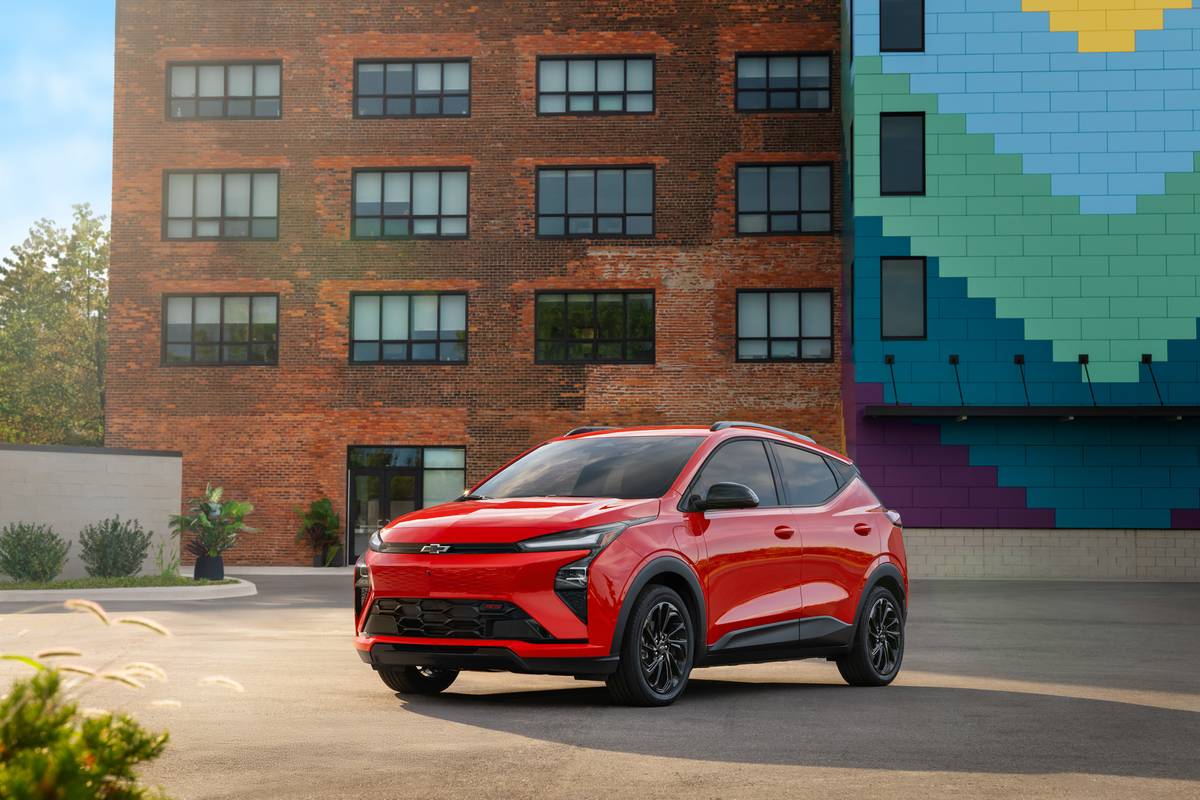
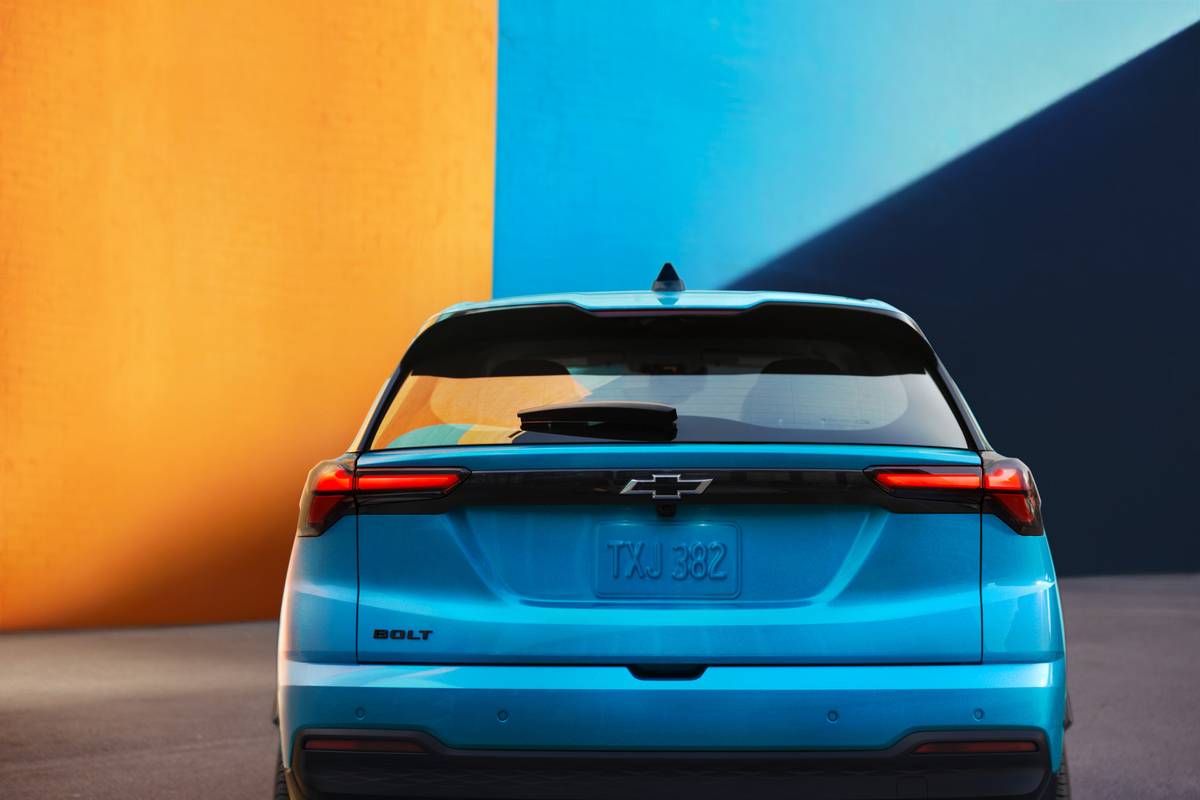
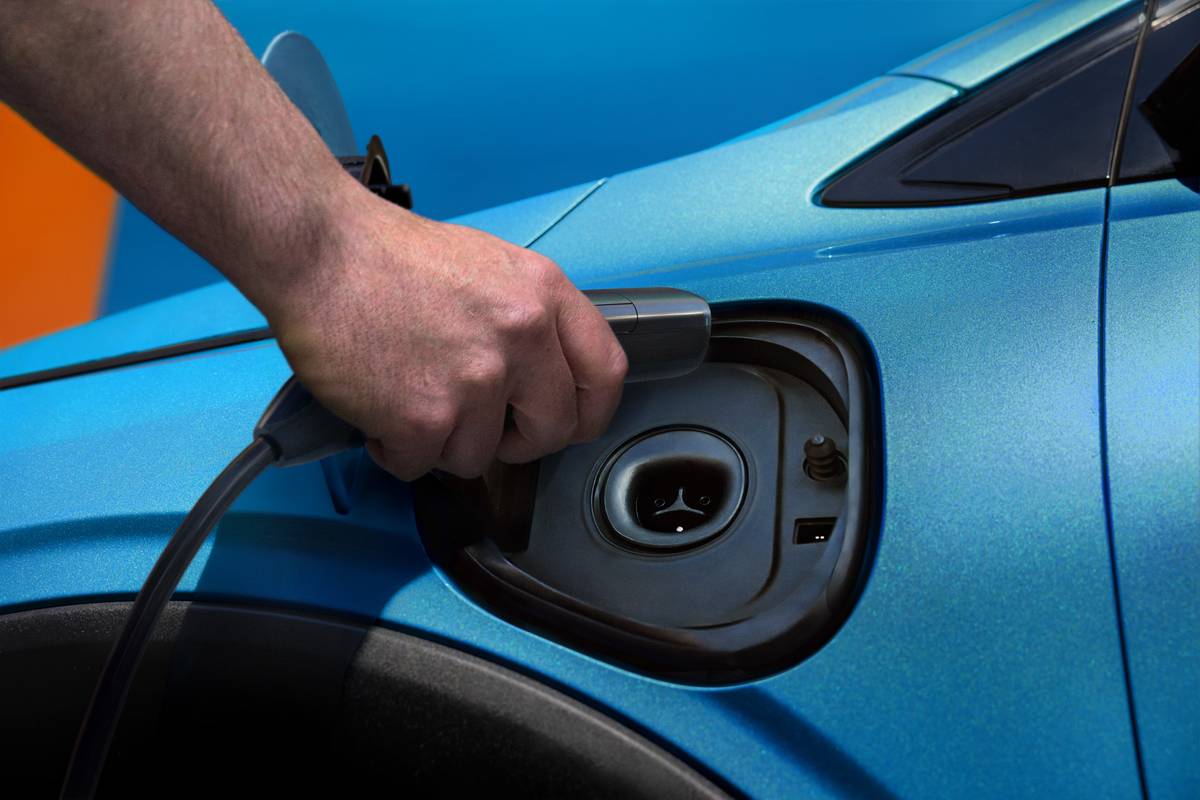
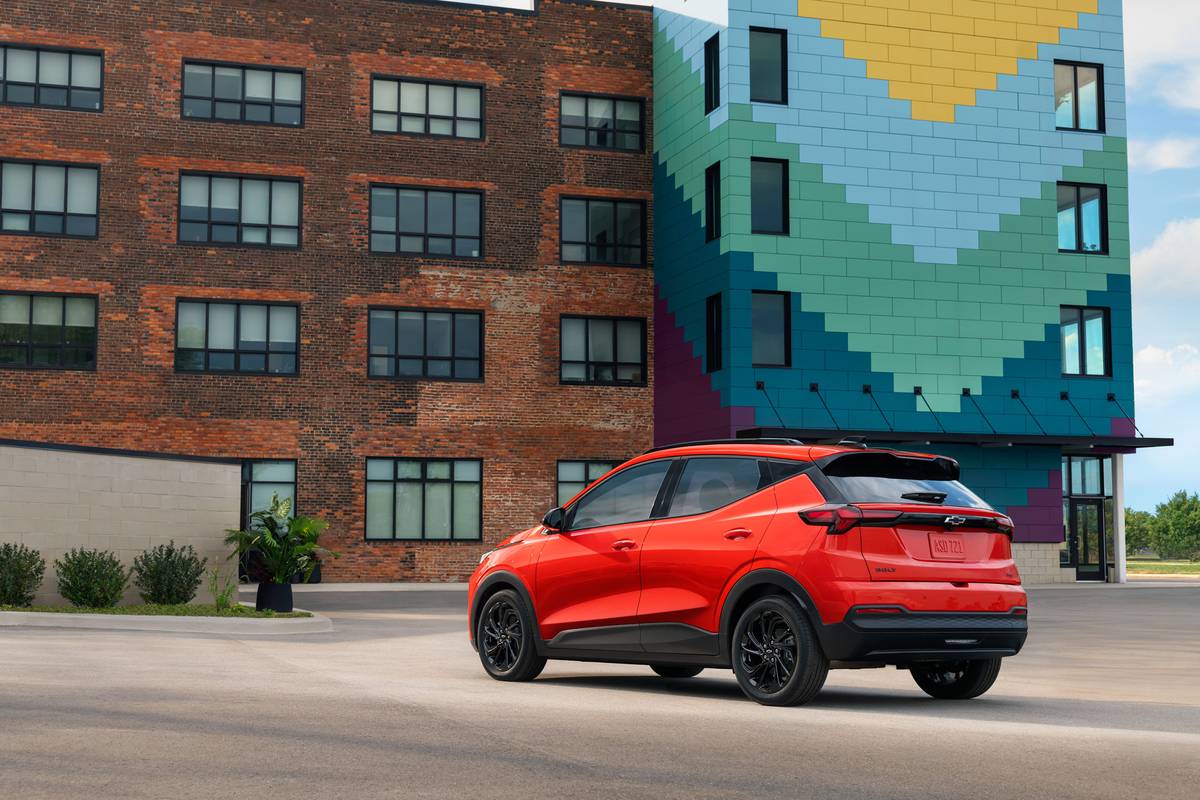
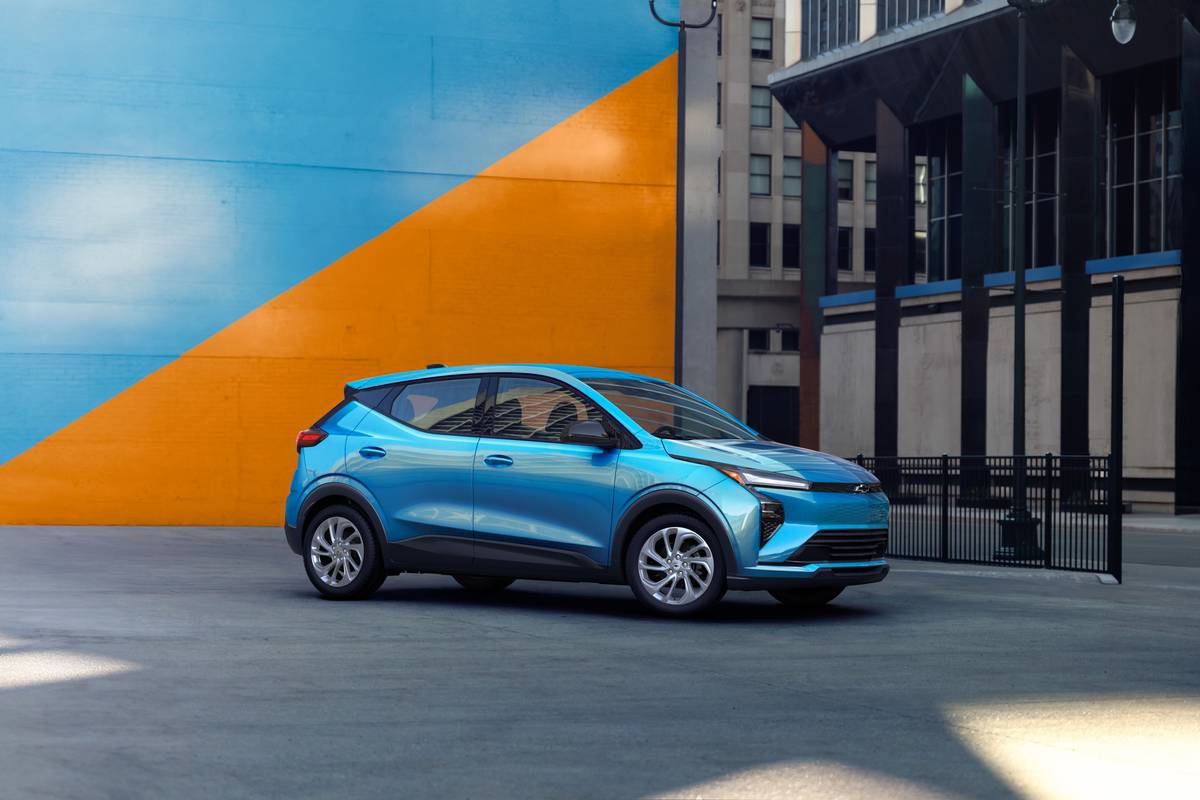
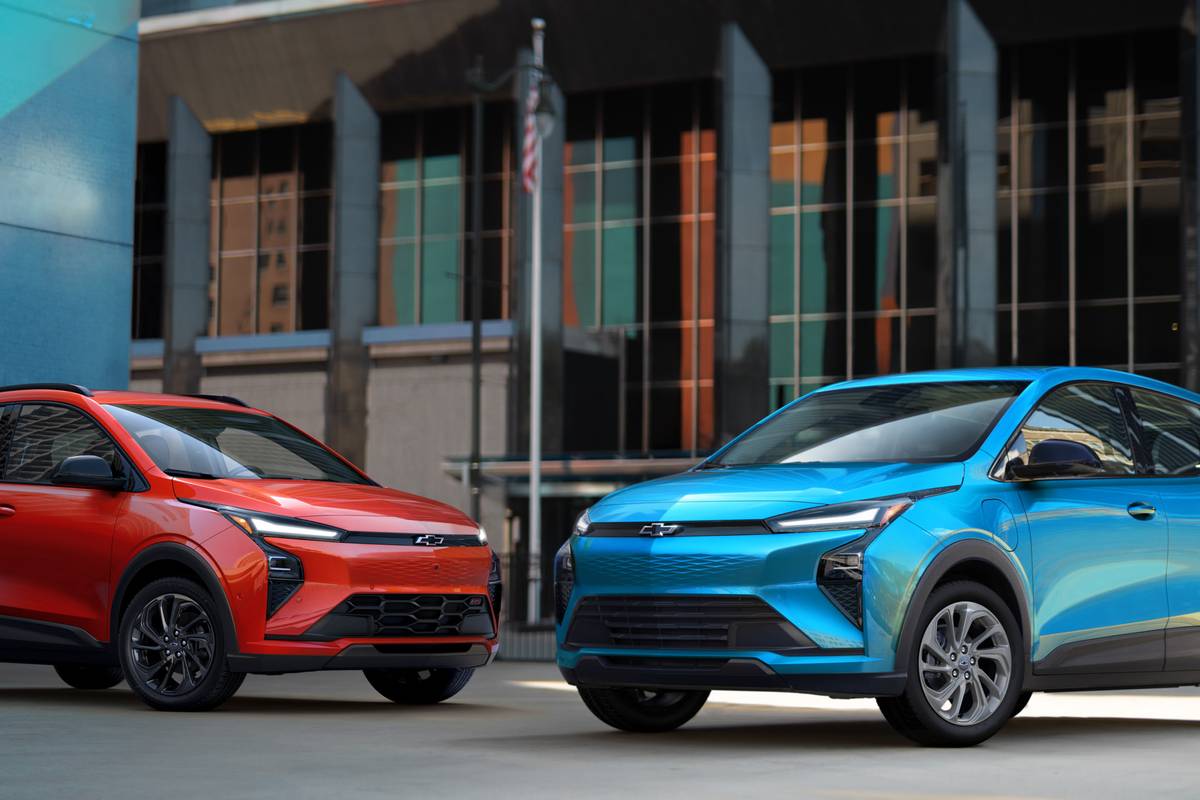
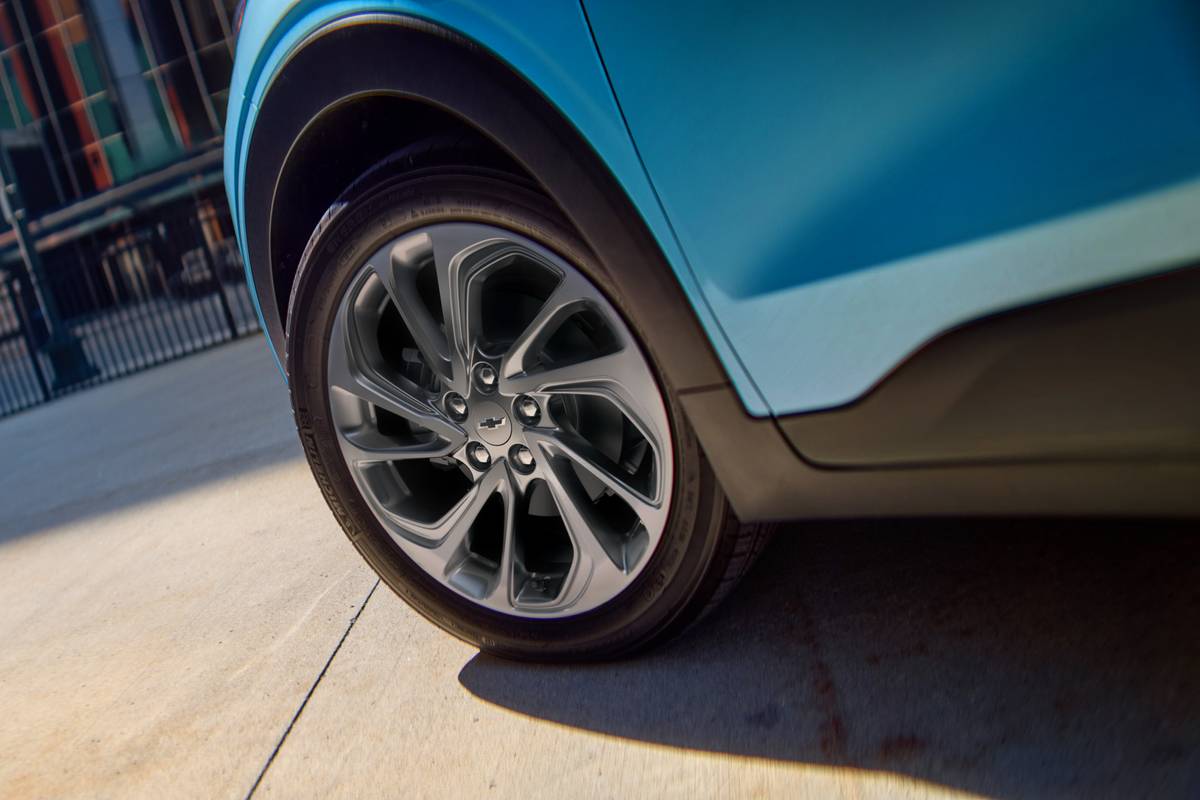
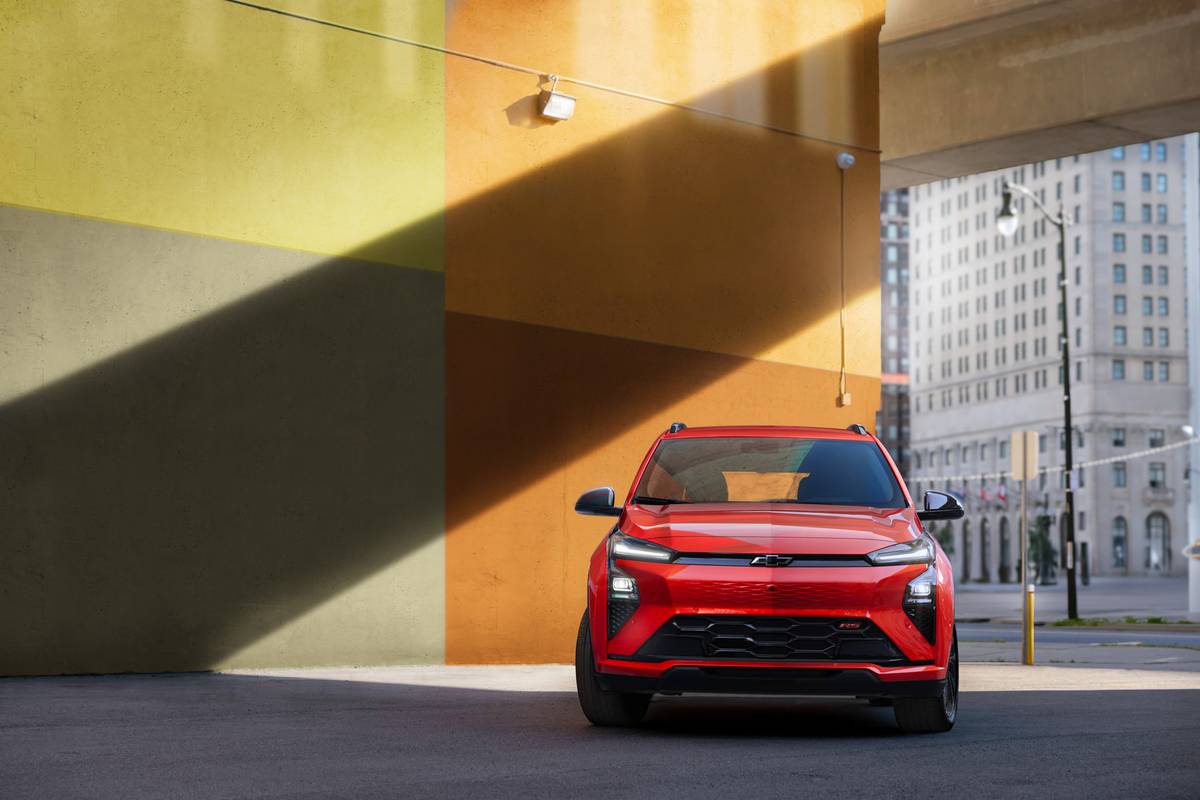
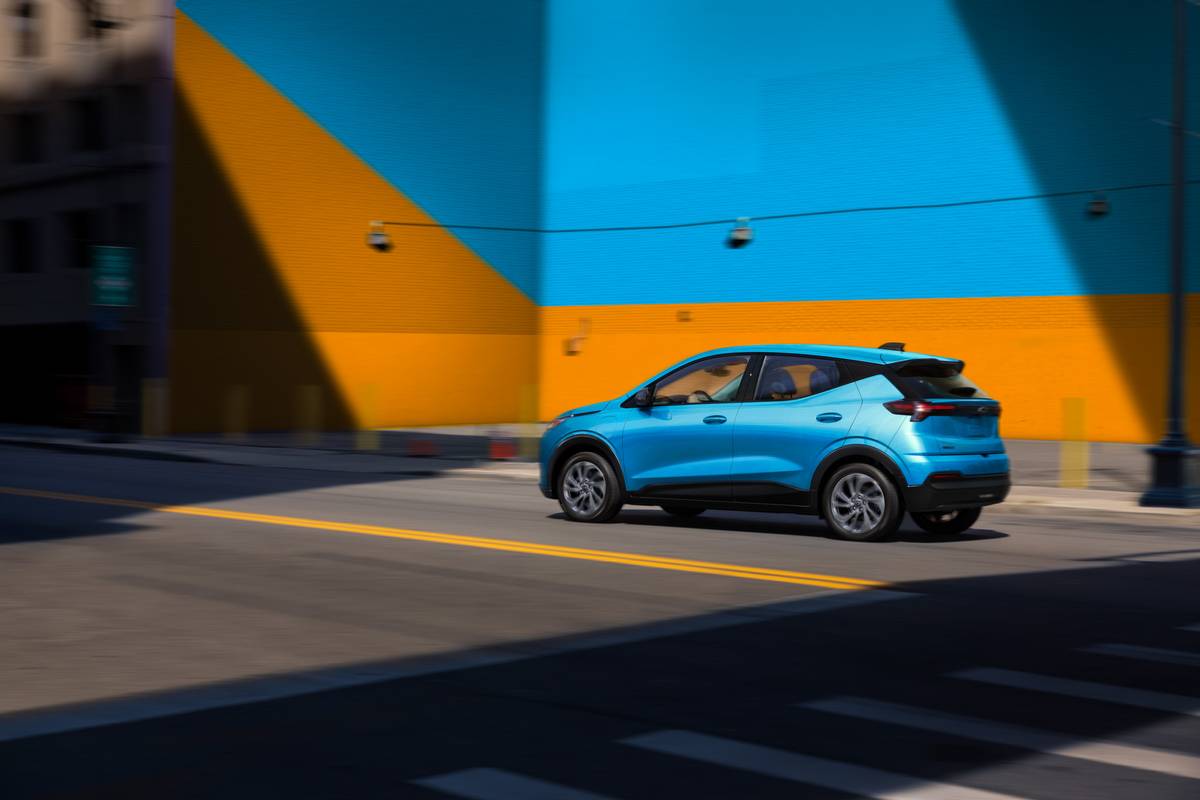



















| 2027 Chevrolet Bolt | 2026 Nissan Leaf | |
|---|---|---|
| Horsepower | 210 | 174 (S) or 214 (all other trims) |
| Battery | 65 kilowatt-hours | 52 (S) or 75 kWh |
| 10%-80% DC fast-charging time | 26 minutes | 35 minutes |
| Maximum charging rate | 150 kilowatts | 150 kW |
| Charge port | NACS | NACS and J1772 |
| Range | 255 (GM est.) | 259-303 (EPA), S trim TBD |
| Self-driving tech | Super Cruise with auto lane change (hands-free) | ProPilot Assist (hands-on) |
| Multimedia screen | 11.3 inches | Dual 12.3 inches or 14.3 inches |
| Multimedia system | Google Built-In | Google Built-In, wireless Apple CarPlay and Android Auto |
| Cargo volume (cubic feet, manufacturer estimates) | 16.2 (behind second row), 56.3 (second row folded) | 20.0 (behind second row), 55.5 (second row folded) |
| Wheelbase (inches) | 105.3 | 105.9 |
| Length (inches) | 169.6 | 173.4 |
| Width (inches) | 80.1 (with mirrors) | 82.6 (with mirrors) |
| Height (inches) | 63.9 | 61.3 |
| Ground clearance (inches) | 5.6 | 5.3 |
| Launch price (includes destination) | $29,990 (Launch Edition), $28,995 (LT, late availability) | $31,485 (S+) |
Battery and Power: Advantage, Bolt
The new Bolt might look like the old one, but that’s because Chevy said it wanted to bring it back as quickly as possible due to customer demand. So, it took the 2023 Bolt EUV’s body structure and gutted it, replacing its battery, electric motor and power electronics with a new system shared with the larger Equinox EV (and several other GM EVs, as well).
From a standard powertrain standpoint, the Bolt’s 65 kilowatt-hour (usable) battery is bigger than the Leaf’s standard 52-kWh battery, but it’s slightly smaller than the optional 75-kWh battery that comes with the Leaf’s S+, SV and Platinum trims. The Bolt’s standard motor is also more powerful, putting out 210 horsepower to the Leaf S trim’s standard 174 hp (you get 214 hp with the S+, SV and Platinum trims).
Range: Advantage, Leaf
The new Bolt can go an estimated 255 miles on a single charge, according to Chevy, which is better than the EPA-rated 247 miles that the old Bolt EUV could do. And thanks to the much quicker DC fast-charging speeds, Chevy says the new Bolt can be used as a road-trip car much more easily than the last one, which was largely relegated to commuting duty.
But the Leaf states three different ranges, depending on trim and equipment. The range for the base S trim with its smaller battery and less powerful motor is not known yet, but the S+ can do 303 miles on a charge, while the top Platinum trim sees that fall to 259 miles — which still beats out the Bolt’s range, but just barely.
Charging: Advantage, Leaf
Both the Bolt and Leaf offer maximum DC fast-charging rates of 150 kilowatts, which is fairly standard, if not exceptional. But Chevy says that the Bolt will take 26 minutes to go from 10%-80% state of charge (in ideal conditions, of course), which is more than 2.5 times quicker than the outgoing Bolt could fast-charge. Nissan reports 35 minutes for the Leaf (presumably based on the Leaf’s larger 75-kWh battery pack).
But the interesting bit is this: Both cars come with a new Tesla-style North American Charging Standard charging port, but the Leaf also comes with a second older-style J1772 port on the driver’s side front fender. (The caveat: The NACS port on the Leaf is only for DC fast charging, while the J1772 port is only for 240-volt AC charging.) If you want to charge your Bolt at an older-style charger, you’ll have to pony up for an extra-cost adapter, says GM. The Leaf can also support vehicle-to-load power of up to 1,500 watts when using a specific adapter that you can plug accessories into; however, the new Bolt can provide vehicle-to-home power at a much higher rate, powering some home systems in a power outage — but it requires a proprietary GM Energy Home System unit to do so.
Nissan also says that the Leaf will be the first EV that the company has offered in the U.S. with a simple plug-and-charge function that, when activated, will allow for simple instant charging at participating public charging stations. The Bolt will, too, according to Chevrolet, but it’s still being developed with more information to come.
Interior Tech: Advantage, Tie
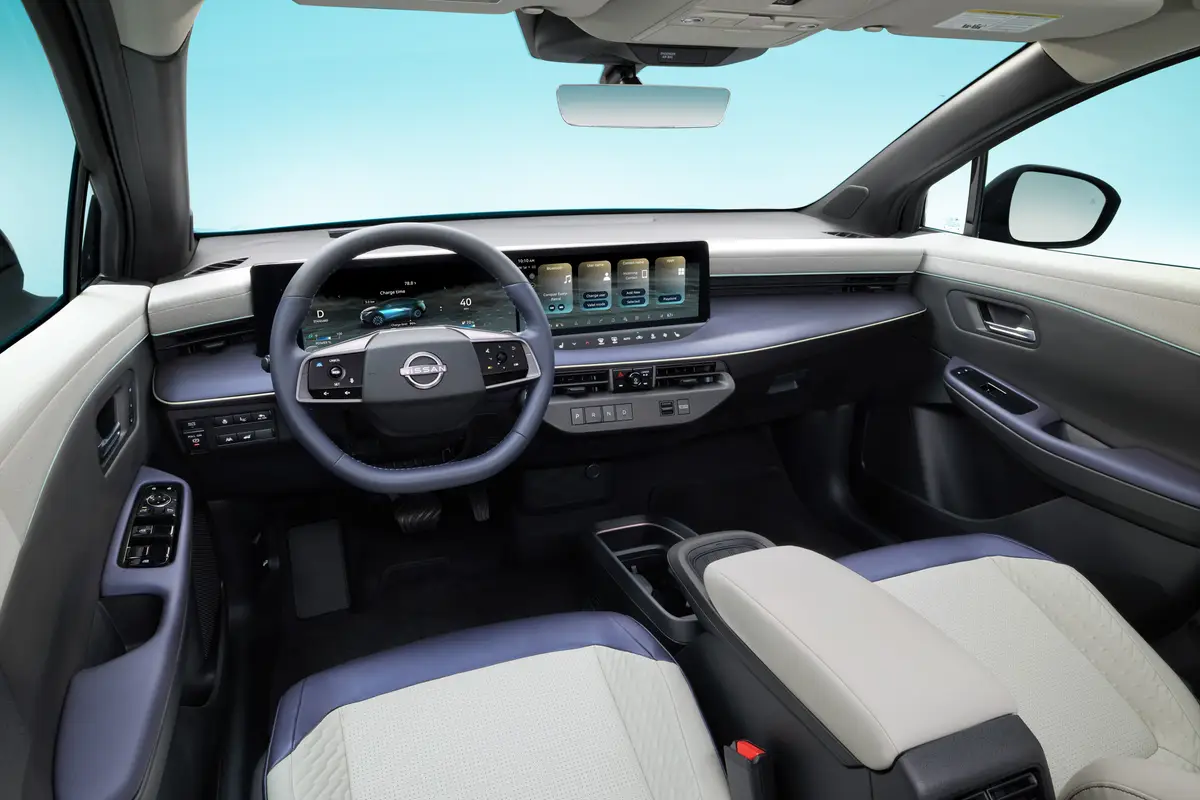
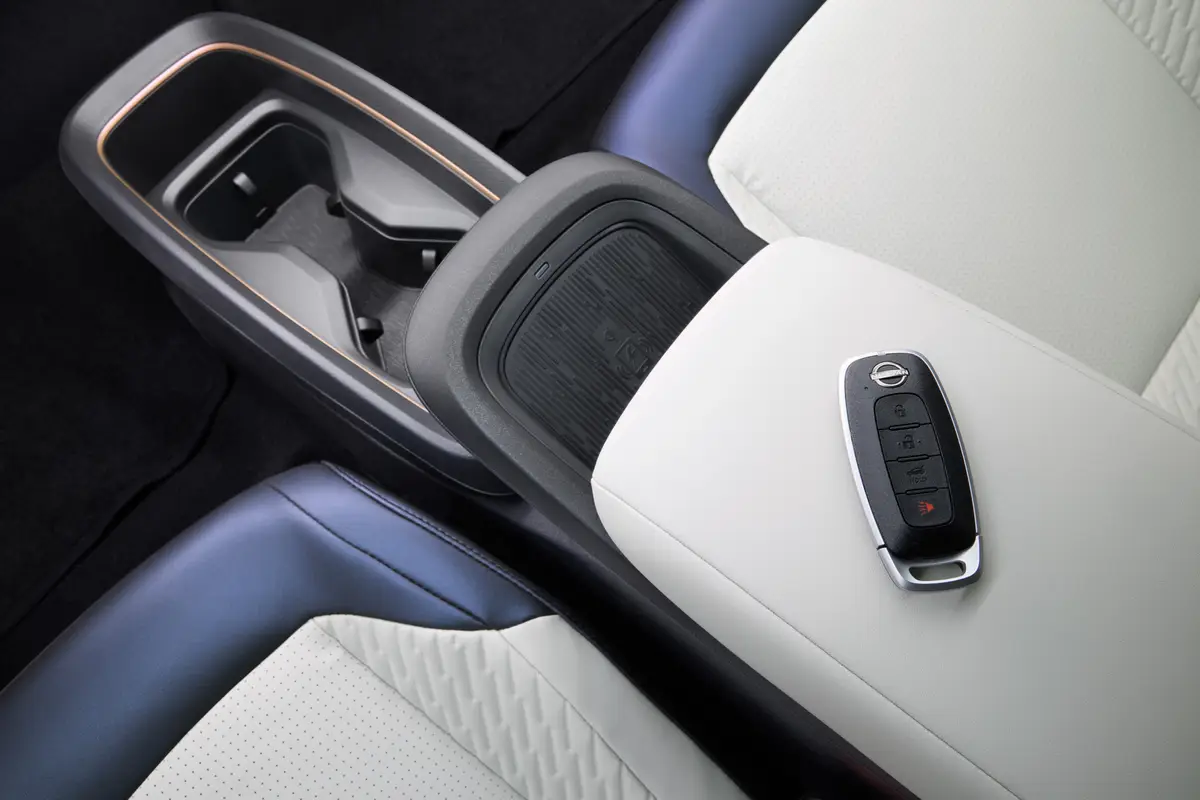

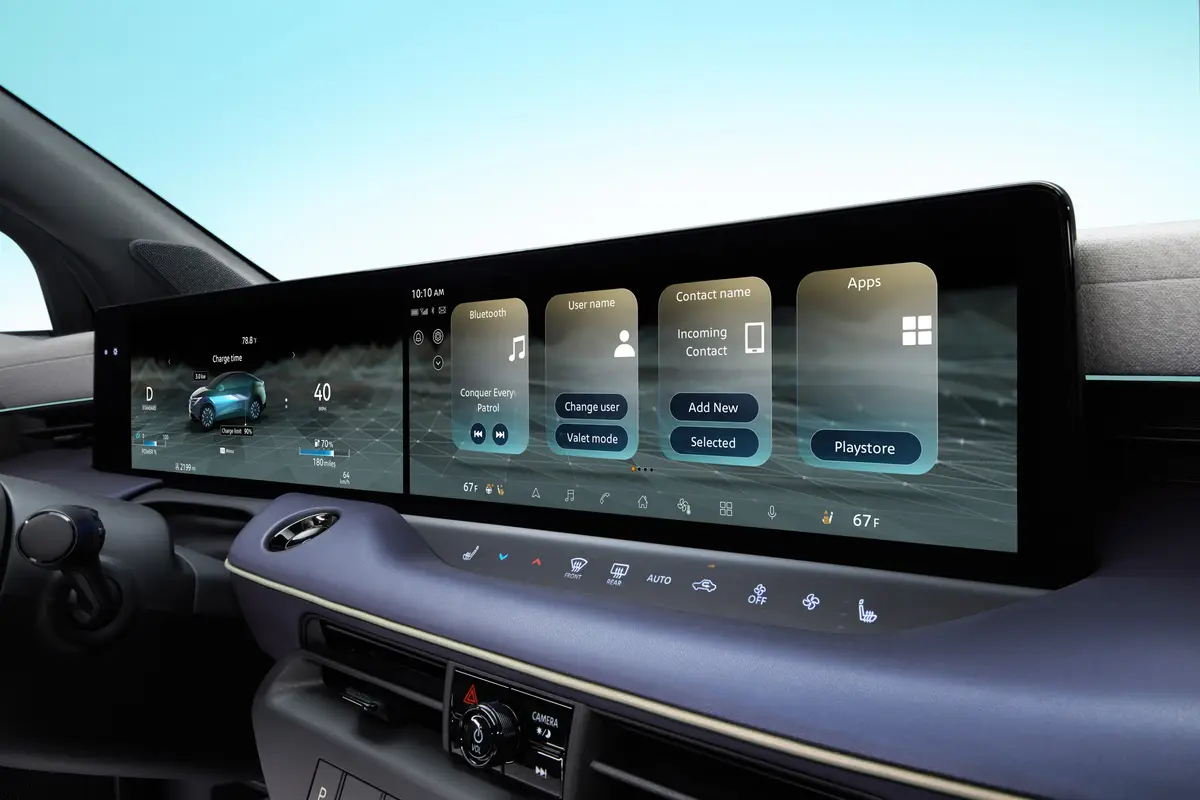
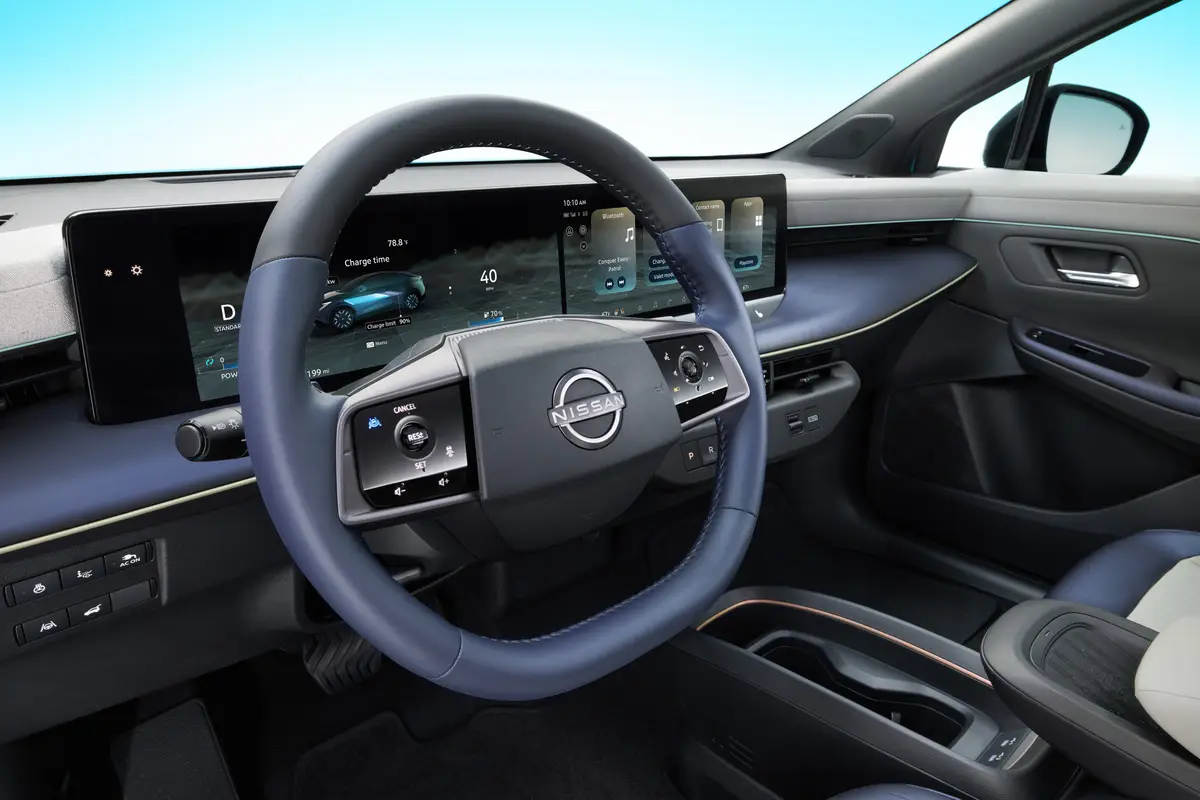
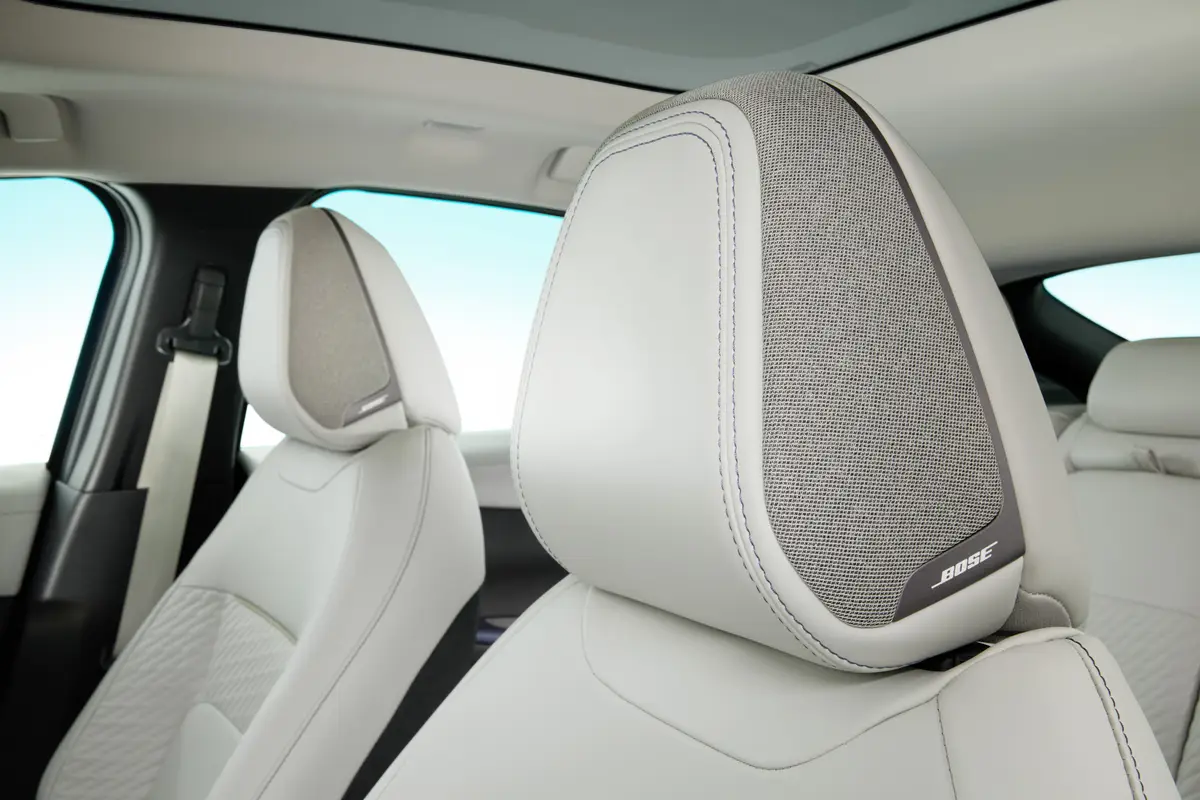
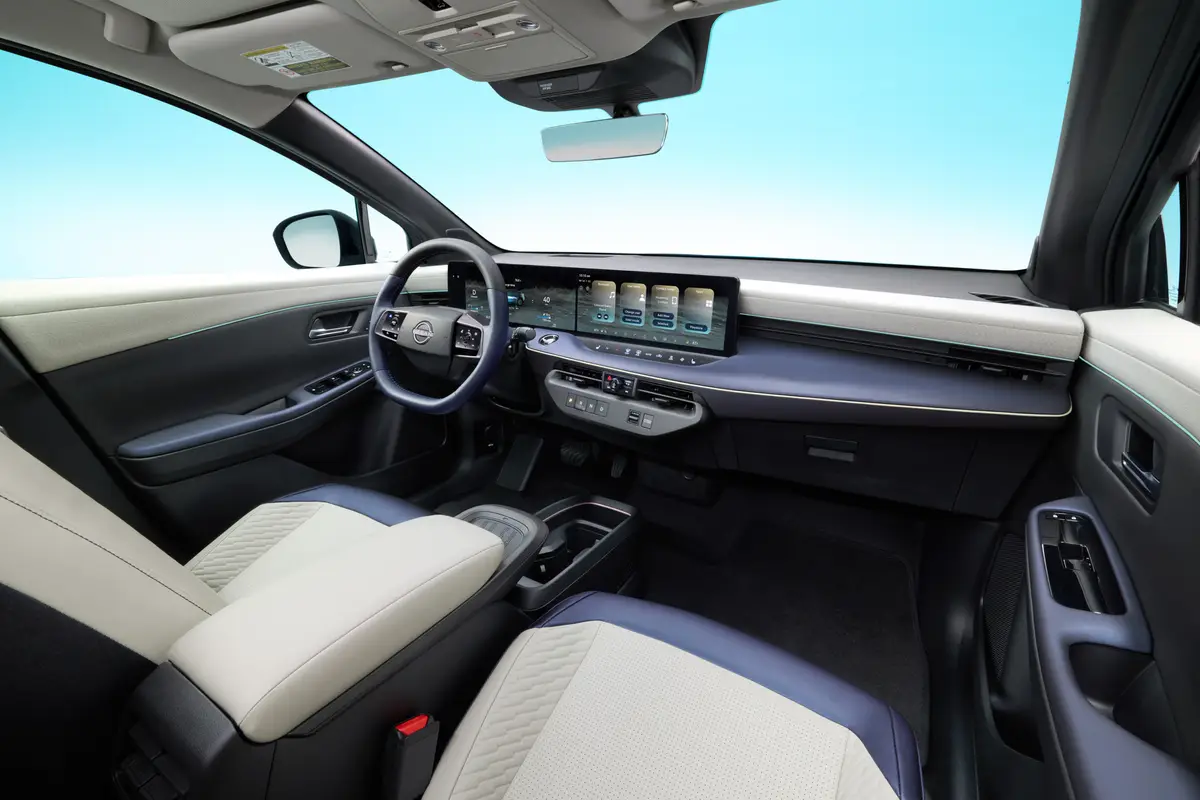
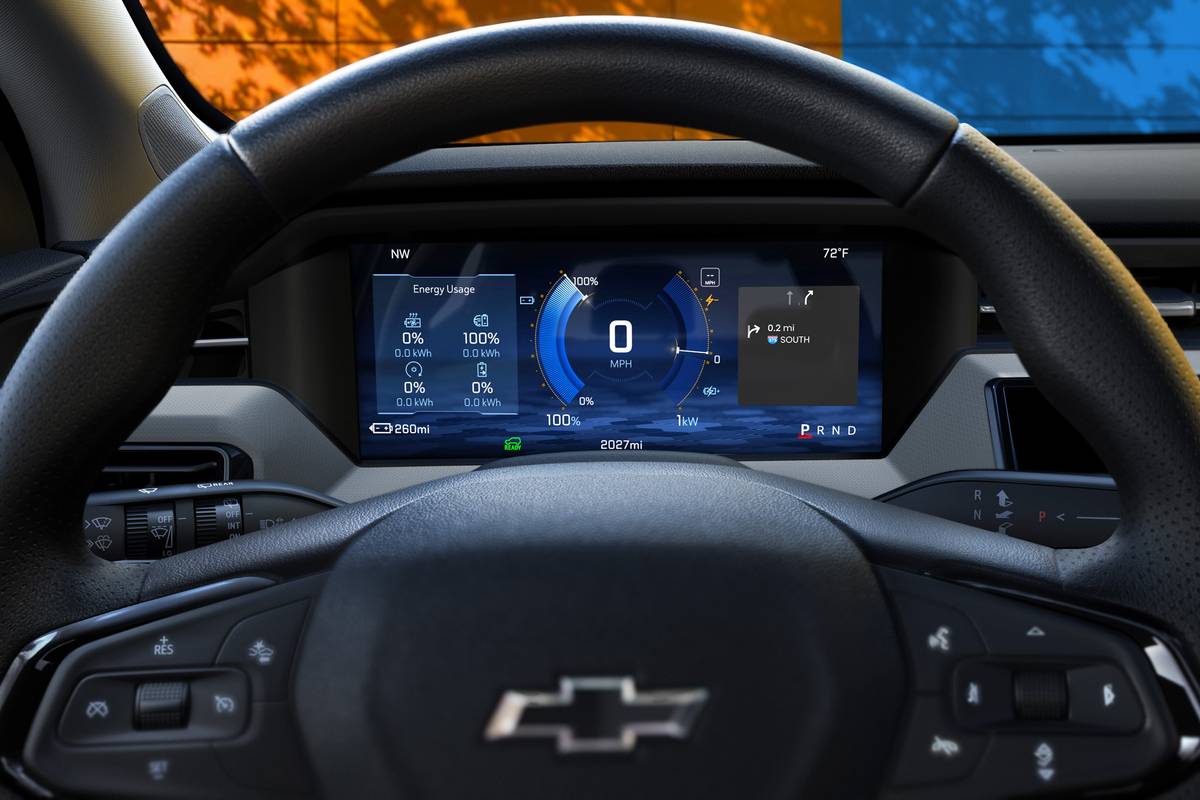
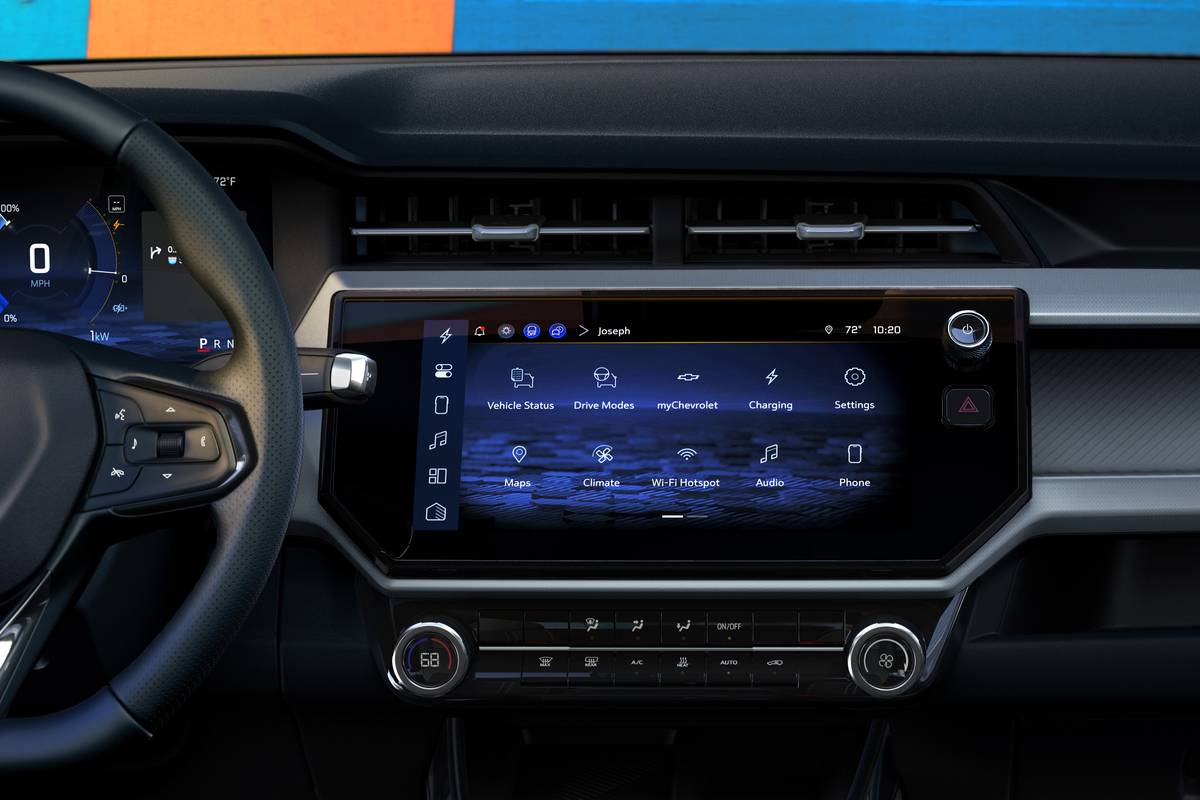
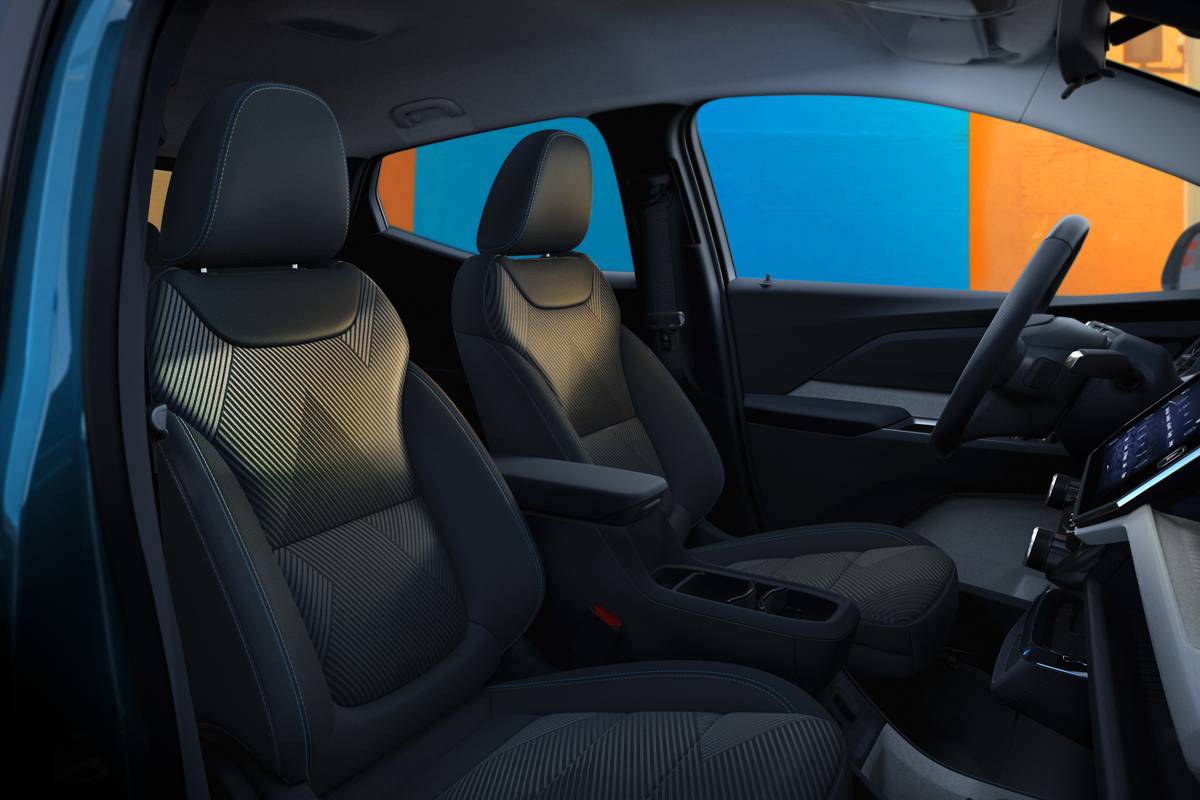
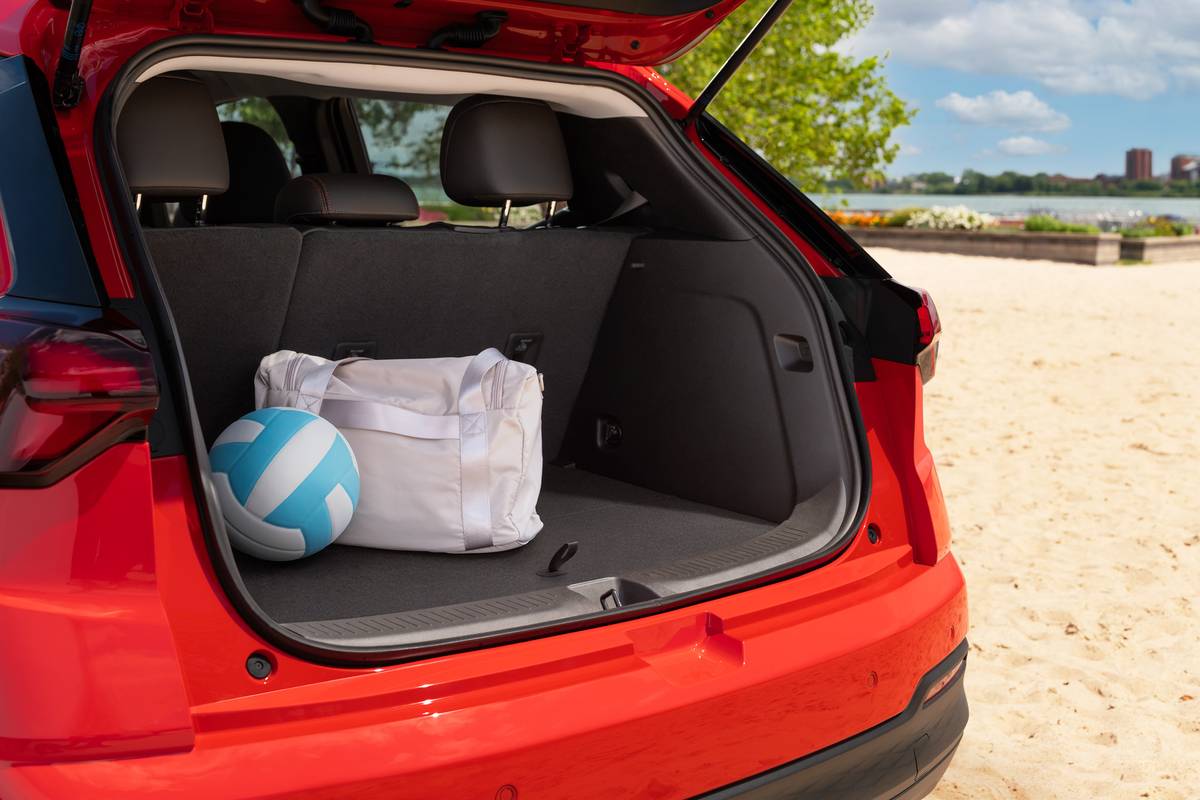
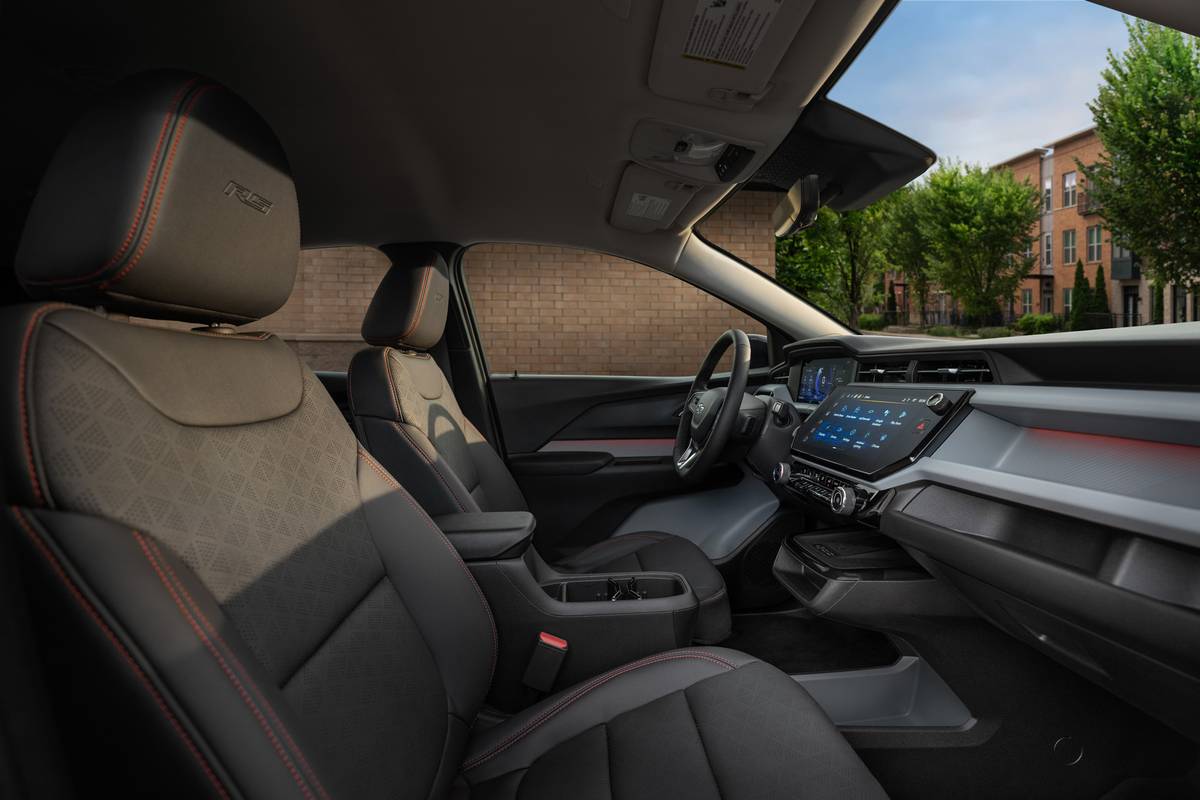
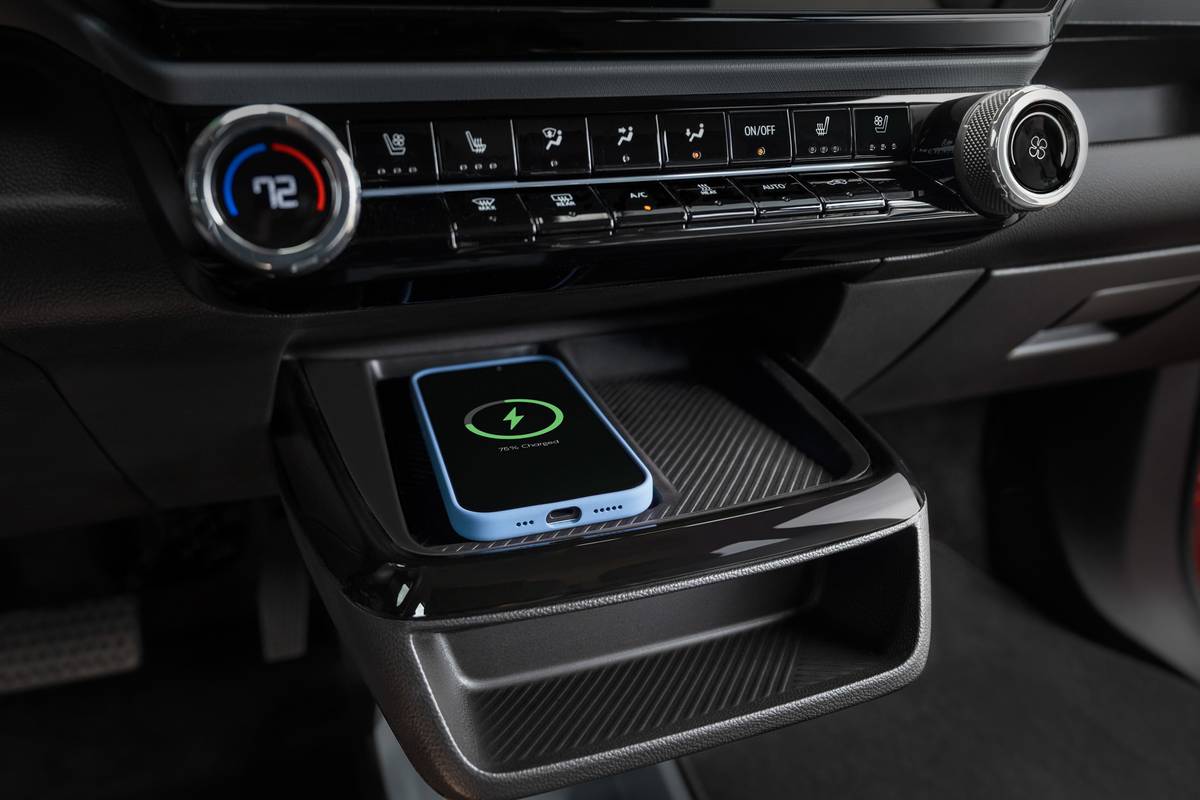













The 2027 Bolt gets a revised interior (with updated bolstering on the seats, according to Chevrolet interior designers, which should make some longtime Bolt owners very happy to hear) with an 11-inch digital instrument panel and an 11.3-inch central touchscreen multimedia system, but not everything has gone touch-sensitive. Chevrolet has made a mix of hard buttons for frequently used items like climate control and audio, as well as touchscreen controls for other systems, much like it has done in the excellent Equinox EV and Blazer EV interiors. The shifter has also been moved to the steering column, freeing up floor console space for an airier interior.
But the Leaf features one of two display options: either two 12.3-inch displays for S and S+ trims or two larger 14.3-inch displays for the SV and Platinum variants, making for a much larger display area. The Leaf does run more touch-sensitive controls than the Bolt, but it still offers hard buttons for frequently used items (but not climate controls). Both the Bolt and Leaf will be running Google Built-In software, but the Nissan still offers wireless Apple CarPlay and Android Auto interfaces — not so for the Bolt, which goes the way of most of GM’s other EVs and ditches the popular Apple CarPlay interface.
The inexcusable absence of Apple CarPlay alone would normally sway us to give the advantage to the Leaf in terms of tech, if not for one other detail: The Bolt will optionally offer the latest version of GM’s incredible Super Cruise semi-autonomous hands-free driving system with automatic lane-change function. The Leaf has no such system, only ProPilot Assist, which acts as a lane-centering, distance-keeping cruise control but requires hands-on attention at all times.
Size and Cargo Room: Advantage, Tie
Chevrolet says that the 2027 Bolt’s structure is carried over from the last-generation EUV model (just with the guts redone). That means that, from a wheelbase standpoint, the new Bolt is at 105.3 inches — about a half-inch shorter than the new Leaf, which rings in at 105.9 inches.
The cargo areas are also comparable, according to manufacturer estimates. While the Leaf has the advantage with the rear seatbacks in place (offering 20 cubic feet of cargo to the Bolt’s 16.2 cubic feet), dropping the second row gives the advantage to the Bolt, which offers up 56.3 cubic feet to the new Leaf’s 55.5 cubic feet. The Bolt’s narrower, taller profile gives a slight boost to headroom in the backseat (37.8 inches versus the Leaf’s 37.2), but the Leaf has the advantage in hip room, with nearly 2 inches more up front and almost 1.5 inches in the back.
Value: Advantage, Bolt
Ahh, now the interesting part — the starting price, at least at launch next year. The 2027 Bolt will come in two versions to start: a Launch Edition available in January 2026 and the LT that will be coming later in the year. With a starting price of $29,990, the Bolt becomes the official least expensive new EV you can buy in the U.S. The late-arriving LT will ring in at an even cheaper $28,995 when it goes on sale.
The least expensive Leaf so far announced is the S+, which will start at $31,485, but Nissan has not yet announced the price of the lesser S trim, which has a smaller capacity battery, lesser horsepower and fewer standard features. Until Nissan tells us what that number will be, the value crown goes to the new Bolt.
Our Expert Take
The return of the Chevy Bolt just a few model years after the last ones rolled off the assembly line might just be the first time an electric car has been resurrected due to popular outcry. It looks very similar to the outgoing Bolt EUV because it is (only the front and rear styling was changed to better match the rest of the latest Chevrolet EV lineup). But all the guts are new and improved, as is the interior, so thinking of this as the third-generation Bolt instead of an all-new model would be appropriate.
The Leaf, however, is completely new and shares a lot of systems with the soon-to-be-discontinued mid-size Ariya SUV. The fact that both of these models are arriving now, after the federal $7,500 tax credit has expired, shows that there is still interest from global automakers in providing an inexpensive EV option. And as technology has improved, the newest entry-level EVs are vastly improved from where they were just a decade ago in terms of price, styling, usability, range, performance and technology — just about everything about them. Whether or not they will be sales successes in a land where EVs have lost federal government support (but still have a lot of local and state incentives to be had) will perhaps be the next big test of the American EV market.
Read More EV News Coverage on Cars.com:
- All-New 2026 Nissan Leaf Remains Cheapest EV Available, Starts at $31,485
- 2026 Nissan Leaf Review: Value Victory
- The EV Tax Credit Is Done; What Should an EV Shopper Do Now?
- What to Know Before Purchasing an Electric Vehicle: A Buying Guide
- Here Are the 11 Cheapest Electric Vehicles You Can Buy
Related Video:
Cars.com’s Editorial department is your source for automotive news and reviews. In line with Cars.com’s long-standing ethics policy, editors and reviewers don’t accept gifts or free trips from automakers. The Editorial department is independent of Cars.com’s advertising, sales and sponsored content departments.

Detroit Bureau Chief Aaron Bragman has had over 25 years of experience in the auto industry as a journalist, analyst, purchasing agent and program manager. Bragman grew up around his father’s classic Triumph sports cars (which were all sold and gone when he turned 16, much to his frustration) and comes from a Detroit family where cars put food on tables as much as smiles on faces. Today, he’s a member of the Automotive Press Association and the Midwest Automotive Media Association. His pronouns are he/him, but his adjectives are fat/sassy.
Featured stories

This or That: 2026 Honda Passport TrailSport Elite Vs. 2025 Toyota 4Runner TRD Off-Road Premium
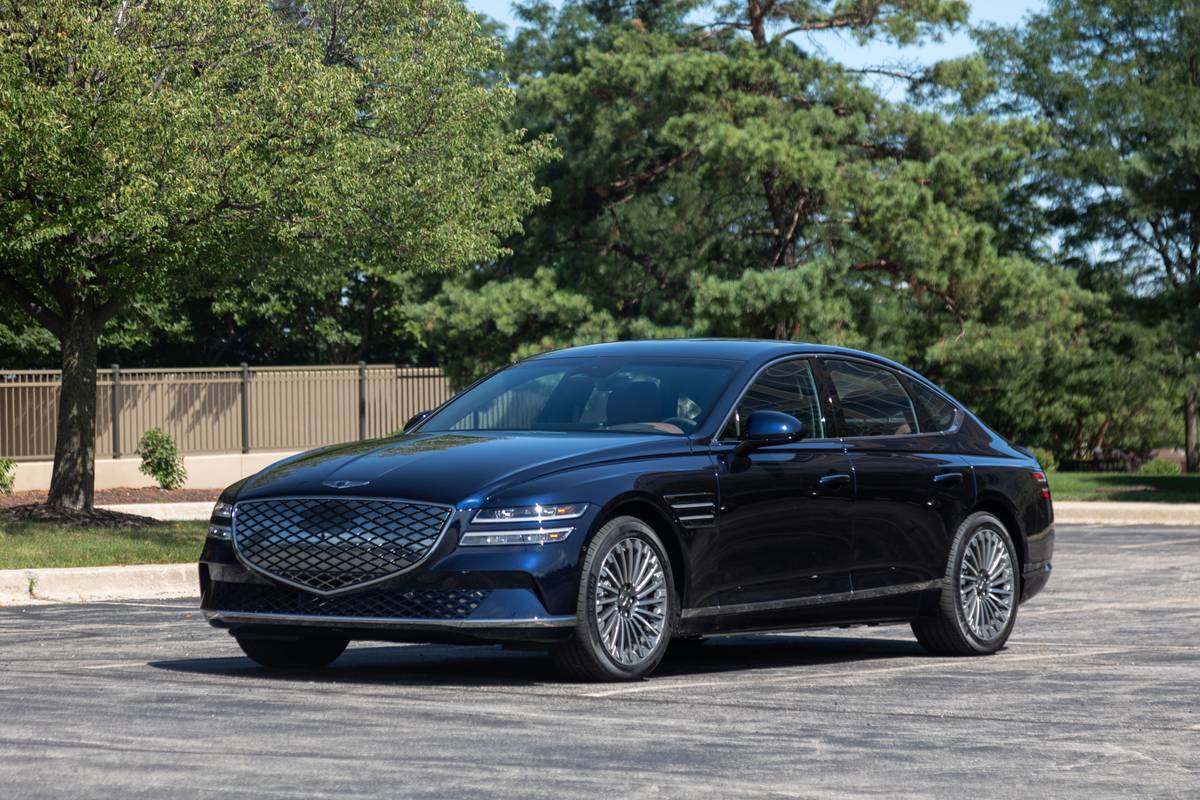

2025 Porsche Panamera GTS Review: Continental Cruiser




















